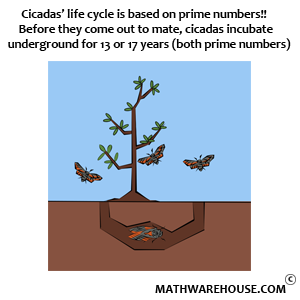Calculate the average rate of change.
$$ \begin{align*} \frac{\Delta f}{\Delta x} & = \frac{\blue{f(4)} - \red{f(0)}}{4 - 0}\\[6pt] & = \frac{\blue{\frac{4+1}{4+2}} - \red{\frac{0+1}{0+2}}} 4\\[6pt] & = \frac{\blue{\frac 5 6} - \red{\frac 1 2}} 4\\[6pt] & = \frac{1/3} 4\\[6pt] & = \frac 1 {12} \end{align*} $$
$$\displaystyle \frac{\Delta f}{\Delta x} = \frac 1 {12}$$
Calculate the average rate of change.
$$ \begin{align*} \frac{\Delta f}{\Delta x} & = \frac{\blue{f(2\pi)}-\red{f(\pi)}}{2\pi - \pi}\\[6pt] & = \frac{\blue{\sin 2\pi}-\red{\sin\pi}}{\pi}\\[6pt] & = \frac{\blue{0}-\red{0}}{\pi}\\[6pt] & = 0 \end{align*} $$
$$\displaystyle \frac{\Delta f}{\Delta x} = 0$$
Calculate the average rate of change.
$$ \begin{align*} \frac{\Delta f}{\Delta t} & = \frac{\blue{f(8)} - \red{f(-2)}}{8 - (-2)}\\[6pt] & = \frac{\blue{60e^{0.5(8)}} - \red{60e^{0.5(-2)}}}{8 - (-2)}\\[6pt] & = \frac{60\left(e^4 - e^{-1}\right)}{10}\\[6pt] & = 6\left(e^4 - e^{-1}\right)\\[6pt] & \approx 325.3816 \end{align*} $$
$$ \displaystyle \frac{\Delta f}{\Delta t} = 6\left(e^4 - e^{-1}\right)\approx 325.3816 $$
Calculate the average rate of change.
$$ \begin{align*} \frac{\Delta f}{\Delta x} & = \frac{\blue{f(-3)} - \red{f(-6)}}{-3 - (-6)}\\[6pt] & = \frac{\blue{(2 - 8(-3) - 5(-3)^3)} - \red{(2 - 8(-6) - 5(-6)^3)}}{-3 +6}\\[6pt] & = \frac{\blue{161} - \red{1130}} 3\\[6pt] & = -\frac{969} 3\\[6pt] & = - 323 \end{align*} $$
$$\frac{\Delta f}{\Delta x} = -323$$
Calculate the average rate of change.
$$ \begin{align*} \frac{\Delta P}{\Delta t} & = \frac{\blue{P(10)} - \red{P(5)}}{10 -5}\\[6pt] & = \frac{\blue{\frac{250}{1+4e^{-0.75(10)}}} - \red{\frac{250}{1+4e^{-0.75(5)}}}}{5}\\[6pt] & = \frac{250\left(\frac 1 {1+4e^{-7.5}} - \frac 1 {1+4e^{-3.75}}\right)}{5}\\[6pt] & = 50\left(\frac 1 {1+4e^{-7.5}} - \frac 1 {1+4e^{-3.75}}\right)\\[6pt] & \approx 4.2 \end{align*} $$
From year 5 to year 10 the population of cute, fluffy bunnies increases at an average rate of about 4.2 bunnies per year.
Calculate the average rate of change.
$$ \begin{align*} \frac{\Delta C}{\Delta x} & = \frac{\blue{C(120)} - \red{C(150)}}{120 - 150}\\[6pt] & = \frac{\blue{25(120)+4500} - \red{25(150)+4500}}{-30}\\[6pt] & = \frac{\blue{7500} - \red{8250}}{-30}\\[6pt] & = \frac{-750}{-30}\\ & = 25 \end{align*} $$
As the amount of goods produced drops from 150 pallets to 120 pallets, the cost of production decreases an average of $25 per pallet.
Note 1: We could have saved ourselves the effort of calculating $$\Delta C/\Delta x$$ by simply noticing $$C(x)$$ is a linear function. The average rate of change of any linear function is just its slope.
Note 2: When the average rate of change is positive, the function and the variable will change in the same direction. In this case, since the amount of goods being produced decreases, so does the cost.
Calculate the average rate of change.
$$ \begin{align*} \frac{\Delta A}{\Delta t} & = \frac{\blue{A(5)} - \red{A(0)}}{5-0}\\[6pt] & = \frac{\blue{2000\left(1 + \frac{0.08}{12}\right)^{12(5)}} - \red{2000\left(1 + \frac{0.08}{12}\right)^{12(0)}}}{5}\\[6pt] & = \blue{400\left(1 + \frac{0.08}{12}\right)^{60}} - \red{400\left(1 + \frac{0.08}{12}\right)^{0}}\\[6pt] & = \blue{400\left(1 + \frac{0.08}{12}\right)^{60}} - \red{400}\\[6pt] & \approx 195.94 \end{align*} $$
Calculate the average rate of change.
$$ \begin{align*} \frac{\Delta A}{\Delta t} & = \frac{\blue{A(10)} - \red{A(5)}}{10-5}\\[6pt] & = \frac{\blue{2000\left(1 + \frac{0.08}{12}\right)^{12(10)}} - \red{2000\left(1 + \frac{0.08}{12}\right)^{12(5)}}} 5\\[6pt] & = \blue{400\left(1 + \frac{0.08}{12}\right)^{120}} - \red{400\left(1 + \frac{0.08}{12}\right)^{60}}\\[6pt] & \approx 291.92 \end{align*} $$
- During the first five years, the account grows by an average of $195.94 per year.
- During the second five years, the account grows by an average of $291.92 per year.
Calculate the average rate of change.
$$ \begin{align*} \frac{\Delta R}{\Delta V} & = \frac{\blue{R(9)}-\red{R(1.5)}}{9-1.5}\\[6pt] & = \frac{\blue{\frac{0.02} 9}-\red{\frac{0.02}{1.5}}}{7.5}\\[6pt] & = \left(\blue{\frac{0.02} 9}-\red{\frac{0.02}{1.5}}\right)\cdot \frac 1 {7.5}\\[6pt] & = -\frac 1 {675}\\[6pt] & \approx -0.00148 \end{align*} $$
As the voltage increases from 1.5 volts to 9 volts the resistance will decrease at an average rate of $$\frac 1 {675}$$ ohms per volt, or approximately 0.00148 ohms per volt.
Rewrite the average rate of change as a fraction with a denominator of 1.
$$ \frac{\Delta P}{\Delta t} = 12\% = \frac{12\%} 1 $$
As $$t$$ increases from 3 hours to 12 hours of training, proficiency increases at an average rate of 12% per hour.
Rewrite the average rate of change so it has a 1 in the denominator.
$$ \frac{\Delta R}{\Delta x} = -0.2 = -\frac{0.2} 1 $$
When sales increase from 0.8 to 1.4 tons, the company's revenue decreases at an average rate of $200 per ton of goods sold.
Note 1: Since the average rate of change is negative, the two quantities change in opposite directions. Since the amount of goods sold is increasing, revenue must be decreasing. Note 2: Even though the average rate of change in revenue is negative, this does not mean that the company is losing money. It only means they are earning less per ton than previously. This might happen if the company decreases the price of their goods. They sell more goods, but earn less per item.
Define variables.
- Let $$I = $$ the amount of electrical current flowing through the circuit, measured in amps.
- Let $$t$$ represent time, measured in seconds.
$$\displaystyle \frac{\Delta I}{\Delta t} = 0.03$$
Define variables.
- Let $$d$$ represent the persons distance from their starting point, in kilometers.
- Let $$t$$ represent time, in hours.
$$\displaystyle \frac{\Delta d}{\Delta t} = 85$$
Find the total distance driven if the person had been driving at 80 kph for the entire 2.25 hours.
$$ \frac{80\mbox{ kilometers}}{1\mbox{ hour}} \cdot \frac{2.25\mbox{ hours}} 1 = (80)(2.25) \mbox{ kilometers} = 180 kilometers $$
Determine the remaining distance that had to be driven during the last 1.5 hours.
The driver has spent $$3/4$$ of an hour driving at 50 kph, and so had traveled $$50\cdot 0.75 = 37.5$$ kilometers. This left $$180-37.5 = 142.5$$ kilometers to travel.
Determine the speed needed to cover the remaining distance in the remaining time.
The person needed to travel 142.5 kilometers in 1.5 hours. So the speed had to be
$$ \frac{142.5\mbox{ kilometers}}{1.5\mbox{ hours}} = 95\mbox{ kph.} $$
The person drove at a speed of 95 kilometers per hour for the last 1.5 hours.
Determine the total amount of energy used during the 20 minutes.
$$ \frac{50\mbox{ joules}}{\mbox{second}} \cdot \frac{20\mbox{ minutes}} 1 = \frac{50\mbox{ joules}}{\mbox{second}} \cdot \frac{1200\mbox{ seconds}} 1 = 60{,}000\mbox{ joules}. $$
Determine the amount of energy that needed to be used during the last 5 minutes.
Since the bulb had been burning at 30 watts for 15 minutes, it had already used
$$ \frac{30\mbox{ joules}}{\mbox{second}} \cdot \frac{15\mbox{ minutes}} 1 = \frac{30\mbox{ joules}}{\mbox{second}} \cdot \frac{900 \mbox{ seconds}} 1 = 27{,}000\mbox{ joules}. $$
The remaining energy to be used would be 60,000-27,000=33,000 joules.
Determine the rate (in joules/second) that would be needed to use the remaining energy during the last 5 minutes.
The remaining energy would have to be used in 5 minutes which is the same as 300 seconds. So, we have
$$ \frac{33{,}000\mbox{ joules}}{300\mbox{ seconds}} = \frac{110\mbox{ joules}}{1\mbox{ second}} = 110\mbox{ watts}. $$
The bulb would have burned at 110 watts during the last 5 minutes.


















